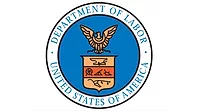Government Agencies Warm Up to Heat Treatment: New Applications for an Old Process

Government agencies, schools and other institutions have recently looked towards heat treatment as an effective solution to some common biological contamination problems. The new technology is being considered as an appropriate non-chemical approach to problems in situations where legislation requires or business climate is leaning towards environmentally responsible solutions to contamination issues.
Most of us are familiar with the term pasteurization. Pasteurization is a process to eliminate human pathogens and reduce the overall concentration of microorganisms in food and industrial processing (Stetzenbach and Yates 2003). Louis Pasteur developed heat preservation processes between 1854 and 1864 when he determined that bacteria were causing wine to spoil. Through experimentation, he discovered that when heated to a certain threshold and held for specific period of time, the bacteria could be killed without damaging the wine. Later applications for pasteurization included other liquids such as milk and fruit juices, and heat has become an important tool for reducing biological contamination and an important method of preservation throughout the food industry. Pasteurization is distinct from sterilization, which uses extreme physical or chemical means to eliminate all biological agents (for example, autoclave treatments of surgical instruments), but may adversely affect the food or other materials being sterilized (Black 1999, Doyle et al. 2001).
In recent years, indoor environmental technicians have honed the engineered application of dry heat to a whole building, a portion of the structure, or its contents, with the purpose of killing targeted organisms. The principle of this process, often termed “structural pasteurization” or “thermal disinfection,” is similar to pasteurization in that it has demonstrated that certain microorganisms are susceptible to heat and that overall microbial levels could be significantly reduced. Each organism has a specific thermal death point, and many of those inhabiting built structures fall within the range of efficacy for this process. The thermal death point for organisms, including species of insects, arthropods, fungi, bacteria and viruses, is a function of temperature and duration coupled with biomass and environmental factors. Death rates at high temperatures for short durations may be equivalent to lower temperatures for longer times.
The application of thermal disinfection processes to biological problems in structures has proved successful in a number of situations. In all cases where heat treatments are employed, the process is used in conjunction with traditional remediation methods that rely on physical removal of contaminated building materials and control of aerosols through the use of HEPA filters.

Insect Control in Schools
With the increasing public concern regarding exposure of children to chemical agents and the implementation of Integrated Pest Management (IPM) programs in California schools, the use of heat treatments for control of insects has recently been expanded. Insect pest control was one of the first applications of heat treatments to structures (Forbes and Ebeling 1987, Ebeling 1994), and has since found wide acceptance in the pest control industry. Effectively employing dry heat as a means of eradicating insects was pioneered by Dr. Walter Ebeling and Dr. Mike Linford at UCLA in the 1970s. The thermal death points were documented for a number of common pests and laboratory experiments were performed to confirm the efficacy of heat against all stages in the life cycle of the insects including adults, larvae and eggs.Inside temperatures are raised to 140-150 F and structural timbers reach 120 F, maintained for one hour. Currently, heat treatment is one of only two methods approved by the State Pest Control Board of California for whole-building eradication of drywood termites (CA Dept. Consumer Affairs 1998). Other effective applications of heat treatment have been noted for the control of cockroaches in commercial buildings and bedbugs in hotels. In cases of building water intrusion, thermal disinfection may also aid in reducing the spread of mold and other fungi by controlling the insect and other arthropod vectors of dispersal.
Flood Restoration and Remediation of Sewage-Impacted Areas with Associated Bacterial CFlood Restoration and Remediation of Sewage-Impacted Areas with Associated Bacterial Contaminationontamination
A private university for photography, film and graphic arts located in Ventura County, Calif., experienced severe flooding from rainstorms in early 2005. During this period, several of the buildings on campus were impacted with water levels reaching two to three feet. A local environmental consultant was called in to determine the extent of contamination by sewage-related bacteria (Escherichia coli and other coliforms), a concern with all the flooding that had occurred through agricultural lands and widespread backup of the County sewer system. The consultant’s initial findings indicated the presence of E. coli, generally considered the most reliable indicator of contamination by human fecal waste. The university needed the facility to be dried rapidly to allow early re-occupancy of the school and prevent the growth of mold, in addition to the need to eliminate the health hazards associated with the presence of sewage bacteria.Heat treatment was used to accomplish this objective in conjunction with physical sewage clean-up methods. Thermal death points for E. coli have been documented over a range of temperatures and durations, such as 140 F (60 C) for 45 minutes (Padhye and Doyle 1992). Temperatures at this site were elevated to 145 F to accomplish rapid drying and exceed the thermal death point of E. coli. Air circulation was increased with additional fan units and HEPA-filtered air scrubbers. Air scrubbers were used continuously to capture aerosol generated by the thermal movement and air exchange. Post-drying samples demonstrated non-detection of E. coli in all areas inspected. The university was open for business exactly one week after the flooding shut down all operations. Given the concerns expressed by facility management over use of antimicrobials, the quick and effective resolution to a potential catastrophe by using the non-chemical approach offered by heat technology demonstrated the appropriateness of the process for this application.

Hantavirus Disinfection, Yosemite National Park
The National Park Service identified approximately 44 buildings scattered throughout Yosemite National Park that required management for potential rodent infestation in order to manage the risks of park personnel contracting the potentially lethal Hantavirus Pulmonary Syndrome (HPS). The usual vector for the virus is the deer mouse (Peromyscus species), a small rodent common in many natural and rural areas throughout North America.The difficulties in managing rodent infestation in park buildings are numerable. Rodent activity is easily identified in occupied areas of the structures, but inaccessible areas such as attics, crawlspaces, and wall cavities are also frequently inhabited by the rodents and the presence of rodent excreta and contaminated nesting material is expected in these areas.
A study by the World Health Organization determined that Hantavirus can be inactivated by a variety of methods including chloroform, ether-alcohol, acid below pH 5.0, phenol, sodium hypochlorite, E60 cobalt irradiation and heat at 60 C for 30 minutes (Lee et al. 1999). Given the restrictions on the use of chemicals within National Parks, heat treatment was selected for use in these buildings. The thermal disinfection process monitored the elevation of temperatures in the structures to 150 F (65.6 C) for two hours, to meet or exceed the lethal temperature and time parameters established by the Center for Disease Control (CDC). This was combined with traditional physical filtration processes including cleaning using HEPA vacuums with workers outfitted in appropriate PPE and use of HEPA air filtration devices during the heating and air exchange process.
An additional benefit to using the heat process was the exclusion of rodents. Because of the gradual increase in temperature during heating, any rodents present in the building will be driven from the structure while it is easy to exit. Following the treatment, rodent exclusion techniques were applied to prevent re-entry. Other organisms such as insects, mites, fungi and bacteria were also potentially killed during the process, adding to the overall building hygiene by effectively reducing biological contaminants within these buildings.
Conclusion
The application of heat treatments of buildings and the process of thermal disinfection of the indoor environment clearly has merit in control of insect pests, rapid drying of structures, elimination of viable bacteria in sewage contamination situations and reduction of hazards of exposure to Hantavirus in buildings with rodent infestations. The process also has potential for more widespread control of microbiological organisms and may provide an additional means of combating some of the adverse health effects associated with exposure to biological material in residential and commercial buildings.Current efficacy studies are ongoing to address the potential application of heat treatment as an aid in situations where mold and bacterial contamination has occurred due to water intrusion events. The potential for heat denaturation of proteins for reduction of some allergen levels in residential buildings is also being investigated. If you liked this feature circle 137 on page 51.
Looking for a reprint of this article?
From high-res PDFs to custom plaques, order your copy today!






